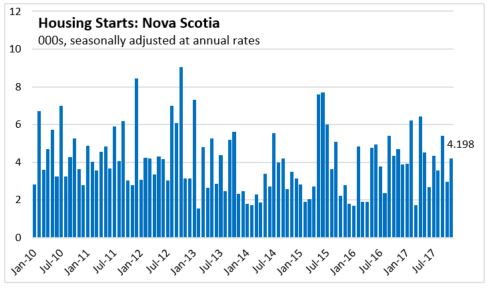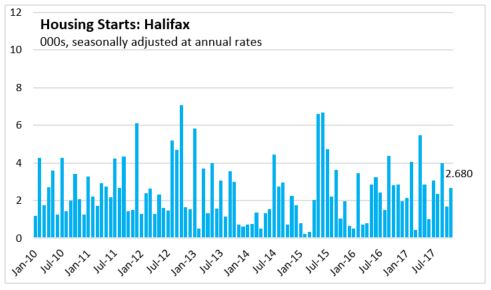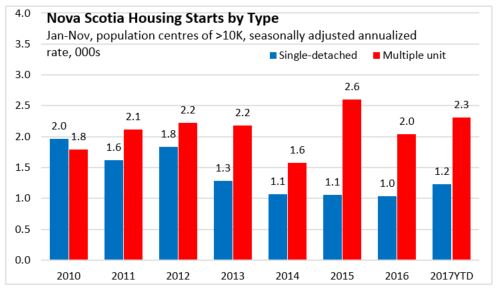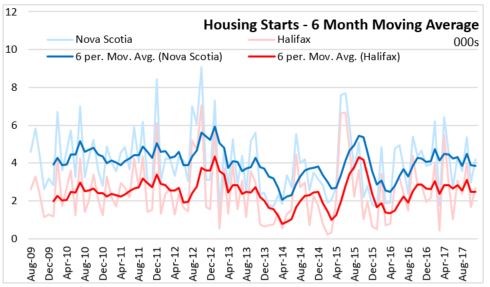The Economics and Statistics Division maintains archives of previous publications for accountability purposes, but makes no updates to keep these documents current with the latest data revisions from Statistics Canada. As a result, information in older documents may not be accurate. Please exercise caution when referring to older documents. For the latest information and historical data, please contact the individual listed to the right.
<--- Return to Archive
For additional information relating to this article, please contact:
December 08, 2017CMHC PRELIMINARY HOUSING STARTS, NOVEMBER 2017 
Nova Scotia's housing starts (seasonally adjusted annualized rate) increased 40.8 per cent to 4,198 in November compared to October, the Halifax market influencing greatly as it rose 58.6 per cent to 2,680.
Compared to November 2016, Nova Scotia housing starts were down 10.4 per cent while Halifax starts were down 5.8 per cent.

Through the first eleven months of 2017, Nova Scotia housing starts were up 13.1 per cent compared to the same period in 2016. That growth was seen in single detached as well as multiples (except row units) starts in population centres over 10,000.

Across the country, the pace of housing starts increased by 13.2 per cent to 252,184 in November compared to October. Housing starts were 34.5 per cent higher than in November 2016.

Housing starts for January-November 2017 were up in all but Newfoundland and Labrador compared to the first eleven months of 2016, led by Prince Edward Island, Manitoba, and Alberta in percentage terms.

The six month average of housing starts has remained relatively flat in both Nova Scotia and Halifax in 2017, albeit with some variability month-to-month. This followed a steady increase through most of 2016, starting the year at around 2,500 and rising to around 4,000 by the end of the year.

Note: Urban areas are defined as areas over 10,000 people
Statistics Canada: CANSIM table 027-0054, CANSIM table 027-0051
CHMC Housing Market Information Portal
<--- Return to Archive